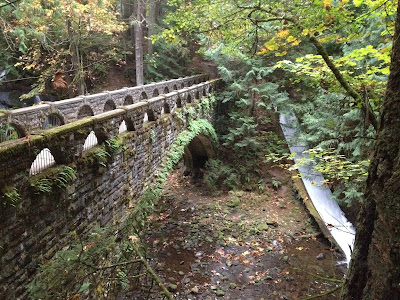Sixteen years ago I started running competitively. Here are five things I know about running now that I wish I had known then.
1. Cadence
 |
| Pamela Jelimo, London, 2008. Photograph: Joe Klamar/AFP/Getty Images
|
Check out the lower half of every professional runner (and cyclist for that matter)
during a race. They have a high cadence of steps-per-minute. As late as college, I took lumbering, heel-striking steps. I think it had something to do with high school coaches encouraging a "longer stride." But an overly long, extended stride does you few favors in terms of efficiency and will lead to knee, hip, and glute injuries. Some people swear by minimalism, others believe in forefoot striking. I believe in cadence. Running ~180 steps-per-minute has saved my post-collegiate running career.
Evolution Running is a nice, non-gimmicky place to learn about cadence and running form.
2. Shoes
 |
| Runners Roost, Denver, CO |
There are only two points of contact in distance running. So it is worth investing in your feet. I wore footwear that was hard on my legs and hips for nearly eight years. These shoes were of good quality, but they were overly stiff for my neutral arch and mid-foot strike pattern. They were designed for feet different than mine. By the end of my collegiate career I had so many muscle-strains and so much scar tissue around my hips, I had to lay on my bed to put my pants on. Awkward. It turns out I had been training in overly supportive shoes. Everyone should go to a
local running store and get fitted. One piece of expert advice is worth a thousand opinions.
3. Be Patient, Think Big
 |
| Calm down there, kid. Photograph: Mark Robinson. |
This is the hardest thing for beginners, from 14-year-olds starting cross-country, to 44-year-olds flush in the excitement of their first 10K. You should not think of improvement in terms of days, or weeks, or months, or perhaps even years. Running (like most things) requires a time horizon that goes well beyond the limits of a calendar year. If you want the most from your self, you need to think beyond individual workouts or four-week cycles of training. If you are preparing for your first 50k this summer, you don’t necessarily need to run a winter 50-mile as the next logical step. Be patient. Play the long game.
I wish I had been less eager at the end of high school and the beginning of college. I logged big miles: 90-110 in singles every week. I thought I needed to be working my hardest every single day. I ran through illness, including a summer of 100 mile-weeks with mononucleolus. I ran through tendinitis, muscle strains, and rolled ankles. I nearly died one summer evening during a post-dinner track workout, which led to exercise-induced anaphylaxis. A couple years later, I collapsed after a workout with heat stroke one awful Carolina afternoon. My senior year, I ended up in the emergency room with gastritis after taking ibuprofen before an intense track session.
I wish I could go back and tell 19-year-old Sam to chill out. Now, every morning, I struggle with a bit of weariness that feels premature. At the age of 31, my legs feel better than when I was 21. But mentally, some days I feel like I'm 60. There are only so many matches, make sure you burn them when they count.
4. Balance Rigor with Fun
 |
| Bay Area Track Club morning miles. Photograph: Magda Lewy-Boulet. |
After eight years of seasonally focusing on track, summer base mileage, and fall cross-country meets, I've learned to not take myself too seriously. I have a tendency to bounce between disciplines: road half-marathons and marathons, punchy 25k trail runs, mountain races, and the occasional return to short cross-country courses. The sport is supposed to be fun, and being overly rigorous in one’s approach to what is (for most of us) a hobby can lead to burnout.
But…
5. Be Committed
 |
| David Torrence, 2015 USA 5K Road Champion. Photograph: kevmofoto. |
There is also something to be said for specialization, devoting yourself to a single craft and honing your abilities and technique for years and years to achieve excellence. When I think of developing a technical skill-set, what the ancient Greeks called
tékne, I think of
David Torrence, a professional runner for Hoka One One with collegiate roots in the East Bay.
One damp Berkeley morning, I arrived at Cal’s track at 6:30 in the morning for a long tempo-paced effort. It was going to be a long slog of a workout. But as I parked my car, I saw that Torrence had already jogged his warm up. When I finished my own warm-up, he was doing activation exercises. As I ran my first segment of six miles up-tempo, Torrence began an intensive set of drills that lasted well over half an hour. As I went into a recovery session, Torrence finally began his “real” workout varying between 600s and 1K intervals. During my second block of up-tempo, Torrence spiked up and began speed work of 150-200 meter strides. We cooled down together. Afterwards, I headed up to the rec locker-room to take a shower. Torrence headed to the weight room for another 90 minutes of weights and stretching. All told, I think he spent nearly six hours working out. Oh, and then he did a shakeout run that evening.
 |
| Torrence and the loneliness of the distance runner. Photograph: Paul Chinn, The Chronicle. |
|
Torrence is a professional runner with support from sponsors. But his is a grueling life—one of disciplining muscle fiber for the singular goal of moving David Torrence as fast as possible around an oval track. I might enjoy scenic vistas on my runs, but I will never beat Torrence in a footrace. Just something to keep in mind. Sometimes the pursuit of excellence should supersede the frivolity of inspiration.
"Do I contradict myself? Very well, then I contradict myself, I am large, I contain multitudes."
- Walt Whitman, "Song of Myself"








Sam, this is terrific. I was just thinking about the injuries you sustained senior year and how you later found the shoes to be the culprit. I believe you wore the Brooks Adrenaline, which is the shoe I wore for the better part of a decade. I just went through a similar experience where it seemed like I was getting injured anytime I ran more than 30 miles in a given week. A local store up here in Brooklyn suggested that I didn't need the support offered by the Adrenaline and placed me in a neutral shoe. I've been injury-free for almost a year and training for the NYC Marathon. It's amazing how much difference your footwear can make.
ReplyDeleteAlex! Great to hear from you. Indeed! Things have changed a bit in the last decade, but in the late 1990s and early 2000s, running shoe stores were "over-prescribing" corrective footwear. I imagine both of us were casualties of this. I still love Brooks, just not the Adrenaline. Best of luck training for New York! If/when I'm living on the east coast again I'd really like to run that--sounds like a blast. #stallions ;)
DeleteLast few days I thought that starts my run, but I won't find any useful resources on the topic. But now I got it, thanks for sharing your article and please give me a piece of advice that what type of insole is best for me, for shoe use only?
ReplyDelete